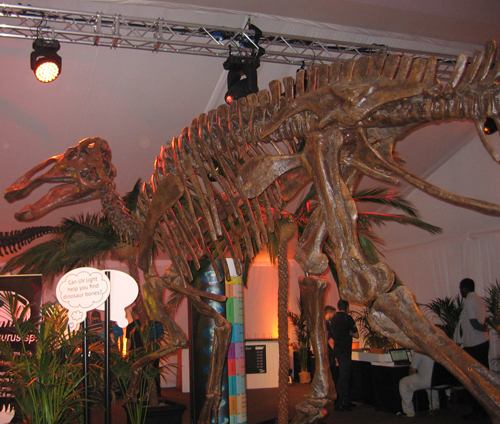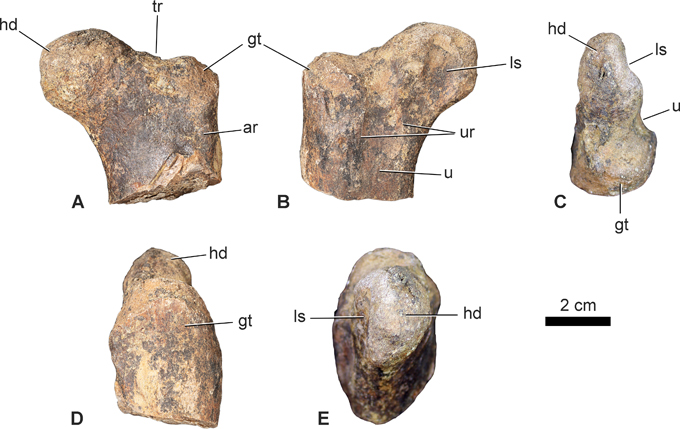The World’s Oldest Cerapoda Fossil Sheds New Light on Dinosaur Evolution
A fragment of a left femur found in the Atlas Mountains of Morocco is the earliest evidence of the cerapodan clade of dinosaurs. An open access study, published in the Royal Society Open Science earlier this month posits that this fragmentary specimen is the world’s oldest cerapodan fossil. As such, it is helping palaeontologists to understand the evolutionary origins of one of the most diverse and successful dinosaur groups.
The World’s Oldest Cerapodan
The Cerapoda consists of bird-hipped dinosaurs (part of the Ornithischia). These mainly herbivorous dinosaurs became a major component of Cretaceous terrestrial ecosystems. They dominated the herbivorous niche in Late Cretaceous ecosystems in the Northern Hemisphere. One of the secrets of their evolutionary success is that they evolved sophisticated chewing mechanisms to help them break down plant material. Early cerapodans were small and bipedal. However, by the Late Cretaceous they had evolved obligate quadrupedality and some of these dinosaurs were the largest non-sauropod dinosaurs on Earth.
The term Cerapoda is a combination of the words ceratopsian and ornithopod.

A cerapodan dinosaur skeleton on display. This is a cast of the enormous duck-billed dinosaur (Edmontosaurus annectens). Hadrosaurs like Edmontosaurus were a major component of Late Cretaceous ecosystems in North America. Picture credit: Everything Dinosaur.
Picture credit: Everything Dinosaur
The Remarkable El Mers III Formation
The fossil was discovered in 2020 by a field team exploring exposures of the El Mers III Formation at Boulahfa, near Boulemane, central Morocco. The strata were laid down during the Bathonian of the Middle Jurassic (168 to 165 million years ago). This specimen represents the world’s oldest cerapodan. The El Mers III Formation has also yielded the world’s oldest ankylosaur, the first discovered in Africa (Spicomellus afer), as well as one of the oldest stegosaurs. For example, in 2019 we wrote a blog post about Adratiklit boulahfa, the first stegosaur to be described from North Africa.
To read our blog post about Spicomellus afer: The Earliest Ankylosaur Known to Science and Africa’s First.
Our 2019 article about A. boulahfa: North Africa’s First Stegosaur.
These North African deposits are providing evidence of some of the earliest members of key clades within the Dinosauria. The fossil (specimen number USMBA 001) consists of a femoral head offset on a distinct neck with a constriction between the head and the trochanter (a ridge that indicates a large muscle attachment). These anatomical characteristics identify the fossil as coming from a cerapodan dinosaur.

USMBA 001, proximal left femur of a cerapodan dinosaur in (A) anterior, posterior (B) and (C) proximal (dorsal). Lateral view (D) and (E) medial view. Note the key – ar, ridge on the anterior surface; gt, greater trochanter; hd, head; ls, ligament sulcus; tr, trough separating head from greater trochanter; u, u-shaped sulcus; ur, ridges bordering u-shaped sulcus. Scale bar equals 2 cm. Picture credit: Maidment et al (Royal Society Open Science).
Picture credit: Maidment et al (Royal Society Open Science)
The researchers conclude that further sampling of the El Mers III Formation sediments will be crucial in helping to understand the radiation of ornithischian dinosaurs. The research team hope to find more fossil material representing the world’s oldest cerapodan.
Callovosaurus leedsi and a Scottish Fossil
Previously, the oldest definite cerapodan fossil was a partial left femur from the Oxford Clay Formation found at Fletton, near Peterborough, Cambridgeshire. The type species was described by the English naturalist Richard Lydekker in 1889. Originally named Camptosaurus leedsi this dinosaur was redescribed in 1980 (Galton) and renamed Callovosaurus leedsi. Its taxonomy has yet to be resolved. The fossil specimen number NHMUK R1993, could represent a basal iguanodontian or perhaps a dryosaurid.

A fragmentary fossil of an ornithopod (Callovosaurus leedsi). Previously, this fossil represented the oldest cerapodan described to date.
Picture credit: Dean Lomax
The fossil is thought to be approximately 164 million years old.
Rounded, tridactyl footprints from bipedal dinosaurs which are thought to represent cerapodan dinosaurs have been reported from Middle Jurassic sediments from around the world. However, early cerapodan body fossils are exceptionally rare. A partial dinosaur skeleton from the Isle of Skye, could be another cerapodan. This specimen is around 166 million years old. Unfortunately, whilst likely to represent a dinosaur, these fossils are too poorly preserved and fragmentary to definitely identify this material as a representative of the Cerapoda.
To read Everything Dinosaur’s article about the Isle of Skye fossil specimen: Rare Elgol Dinosaur Fossil Scientifically Described.
Defining the Cerapoda
The Cerapoda is a clade within the Ornithischia (bird-hipped dinosaurs). It consists of two distinct subgroups, the Ornithopoda and the Marginocephalia. The clade is extremely diverse. The ornithopods include iconic dinosaurs such as Iguanodon, Hypsilophodon and the Hadrosauriformes. In turn, the Marginocephalia comprises the horned dinosaurs (Ceratopsia) and the bone-headed dinosaurs (pachycephalosaurs).
The scientific paper: “The world’s oldest cerapodan ornithischian dinosaur from the Middle Jurassic of Morocco” by Susannah Maidment, Driss Ouarhache, Richard J Butler, Khadija Boumir, Ahmed Oussou, Kawtar Ech-charay, Abdessalam El Khanchoufi and Paul M Barrett published in Royal Society Open Science.
Visit the Everything Dinosaur website: Dinosaur and Prehistoric Animal Models.

